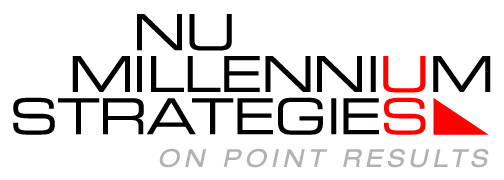By Dr. Alfredo Anthony
Corporations operate and thrive in extremely competitive market spaces; to achieve their business (profits) and intangible (e.g., reputation and market position) goals, they have to compete with other businesses in their market space. The literature addressing competitive advance is voluminous and rife with different approaches to achieve the “holy grail” by highlighting competitive determinants such as strategic corporate resources, core competencies, and management excellence. Strategic resources include tangible and intangible assets that an organization can employ to generate value or can impact the overall operations. Core competencies encompass an organization’s ability to learn collectively and share and assimilate the acquired knowledge throughout the company’s business operations. Management excellence is the constant approach to realize greatness in business; it requires one to consistently explore alternative actions to proceed beyond previous states that produced earlier successes — achieving management excellence fuels leaders into continuous learning, adaptation, and growth cycles that foster a competitive edge, which is difficult to replicate. Companies that possess inimitable competitive determinants will generate a competitive edge that is difficult to supplant. This brief discussion highlights an element of management excellence identified as positive organizational scholarship (POS), which encourages leaders to change organizations and communities in the global landscape.
Positive organizational scholarship, as conveyed by Quinn (2005), influences leaders to transcend the decision-making process from one of comfort and into one that is result-oriented, or the fundamental state of leadership. Leaders can enter the fundamental state through a cognitive process that guides them towards recalling how challenging situations were previously solved; analyzing the current state with those in which one performed at their best, and answering four transformative questions that adjust the focus from an internal perspective to an external and organizational perspective. The transformative questions include: Am I results centered? Am I internally directed? Am I other focuses? Am I externally open?
Positive organizational scholarship is a relatively new organizational management practice that emphasizes the creation of a work environment that is empowering and life-giving to make organizations and members perform in exceptional manners. It is grounded upon rigorous scientific and theoretical investigations to generate positive organizational and personal results (Salopek, 2003). The method promotes several positive characteristics that encompass cheerfulness, quality, precision, vitality, nourishment, confidence, deference, and compassion. The positive sentiments encourage employees to conduct their duties with excellence and generate innovative methods to achieve and sustain the end state (Glinska & Stankiewicz, 2012). Positive organizational scholarship influences leaders to transcend the decision-making process from one of comfort to one that is result-oriented, or the fundamental state of leadership. Leaders can enter the fundamental state through a cognitive process that guides them towards recalling how challenging situations were previously solved; analyzing the current state with those in which one performed at their best, and answering four transformative questions that adjust the focus from an internal perspective to an external and organizational perspective. The transformative questions include: Am I results centered? Am I internally directed? Am I other focuses? Am I externally open?
Frequently, leaders operate within a normal state of comfort, which is conducive for ordinary conditions, however, juxtaposed to the state necessary for coping under crisis. In the normal state, most leaders are self-centered and assume an external outlook, which influences their decisions and the way they react to stressful conditions. They rely upon rational arguments, lose authenticity, or operate under fear when making changes; however, these behaviors usually produce uninspired and short-lasting results (Quinn, 2005). To exit the state of comfort and enter a state of higher performance, leaders need to adopt a cognitive process called the fundamental state of leadership, which requires them to engage in mental shifts that guides them into a powerful space. The fundamental state of leadership model follows a four-step process. The first step requires leaders to become results-oriented by traversing beyond their comfort zones and asking and assessing if they are result-oriented. The second step involves redirecting their external focus to one that is internally motivating by asking if they are internally directed? An honest answer will minimize the prominence of positional power and emphasize actions based on internal convictions (McDonald, 2006). The third step guides a leader to end a self-focused persuasion and consider the needs of the organization and the potential of employees, even at the expense of prolonging their (the leader’s) desires. Answering this question will provide a leader with a good indication of the level of commitment to the group or individuals. The last step is to ask if one is externally open to changes that can generate new and exciting outcomes (Quinn, 2005). Asking and answering these questions enable leaders to move from a state of normalcy to one of heightened performance that may persist even when the leader is not present (Anding, 2005; Quinn, 2005).
Positive organizational scholarship influences leaders to transcend the decision-making process from one of comfort to one that is result-oriented, also known as the fundamental state of leadership. Leaders can enter the fundamental state through a cognitive process that guides them towards recalling how challenging situations were previously solved; analyzing the current state with those in which one performed at their best; and answering four transformative questions that adjust the focus from an internal perspective to an external and organizational perspective (Quinn (2005).
References:
Anding, J. M. (2005). An Interview with Robert E. Quinn entering the fundamental state of leadership: Reflections on the path to transformational teaching. Academy of Management Learning & Education, 4(4), 487-495. doi:10.5465/AMLE.2005.19086790
Glinska-Newes, A., & Stankiewicz, M. J. (2012). Positive organizational potential as a fundamental factor of corporate competitiveness. Competition Forum, 10(1), 3-21. Available at http://search.proquest.com.library.capella.edu/docview/1189858591?accountid=27965Cashman, K. (2008) Leadership from the inside out. San Francisco, CA: Berrett-Koehler
McDonald, T. (2006). You: An owner’s guide. Successful Meetings, 55(8), 17. Available from http://search.proquest.com.library.capella.edu/docview/206030565?accountid=27965
Quinn, R. E. (2005). Moments of greatness. Harvard Business Review,83(7/8), 74-83. Available at http://web.b.ebscohost.com.library.capella.edu/ehost/detail/detail?vid=2&sid=549573e2-ea1a-49fe-a286-ebdcdba75540%40sessionmgr105&hid=118&bdata=JnNpdGU9ZWhvc3QtbGl2ZSZzY29wZT1zaXRl#AN=17601921&db=bth
